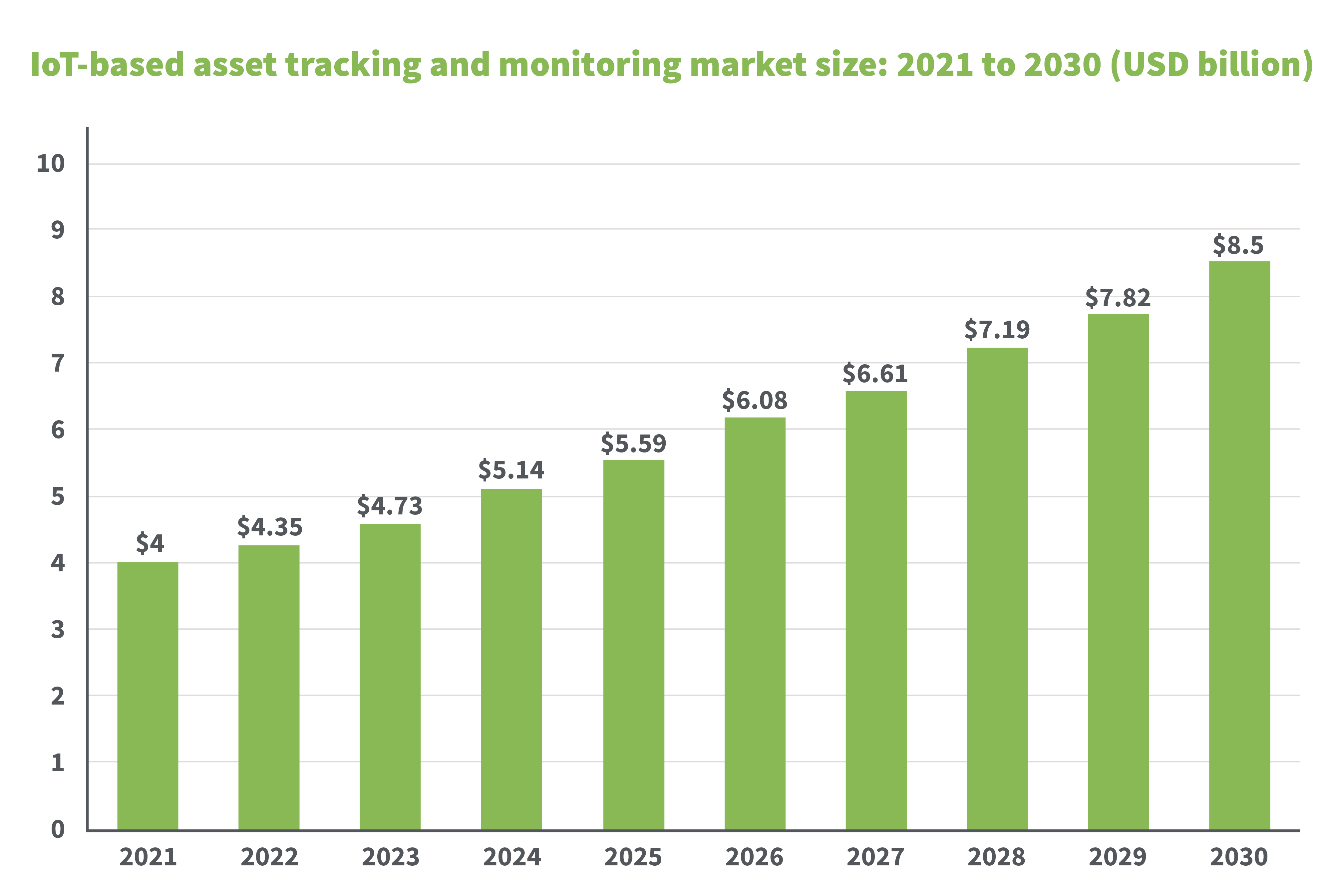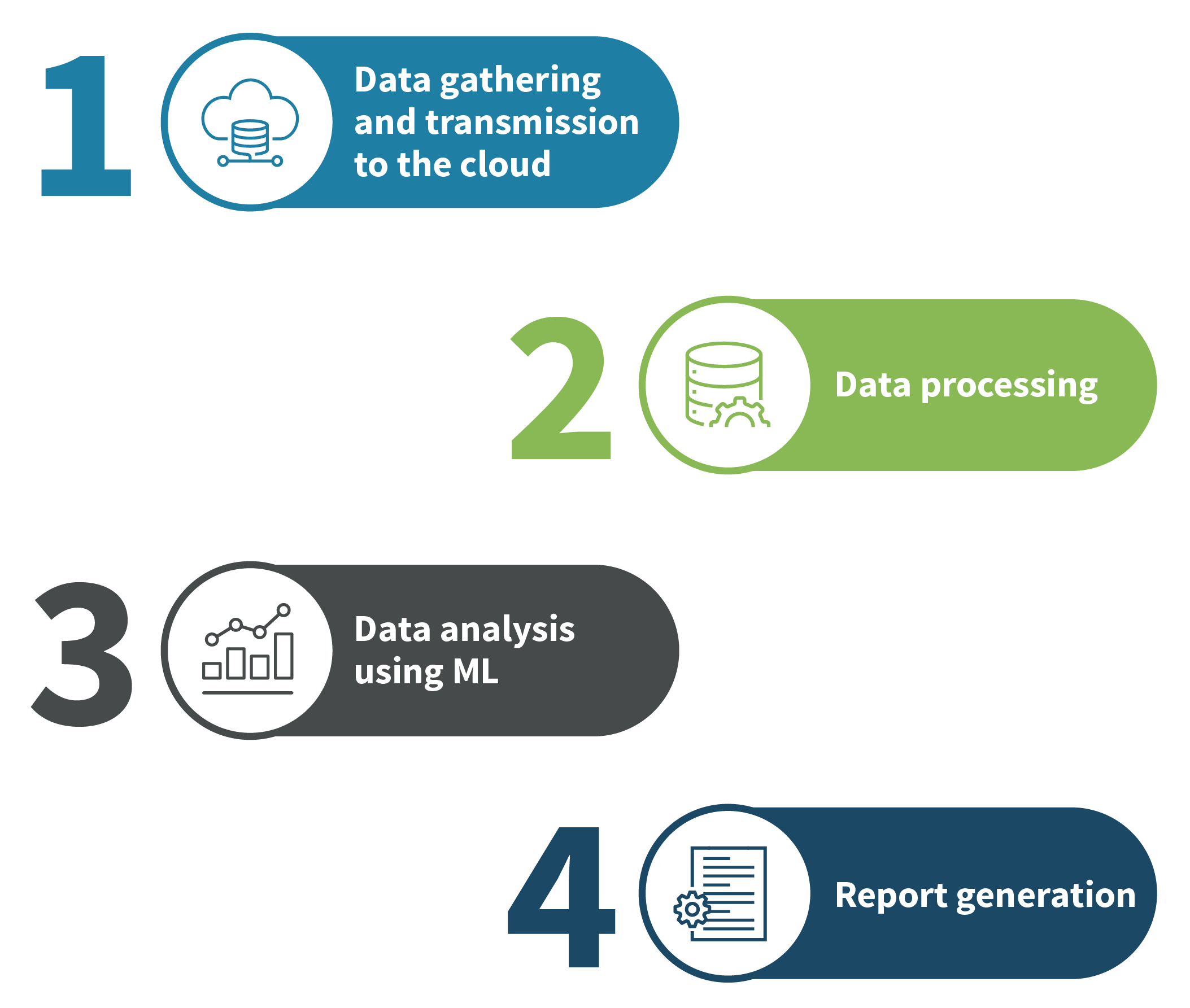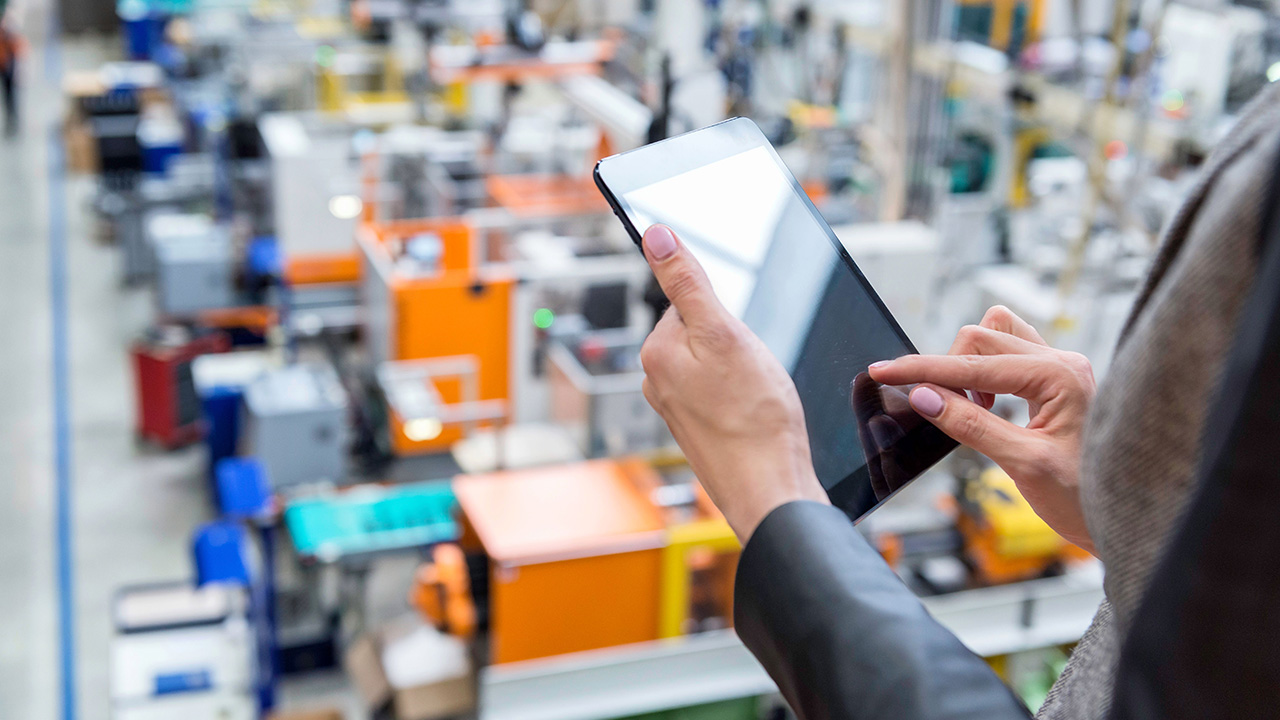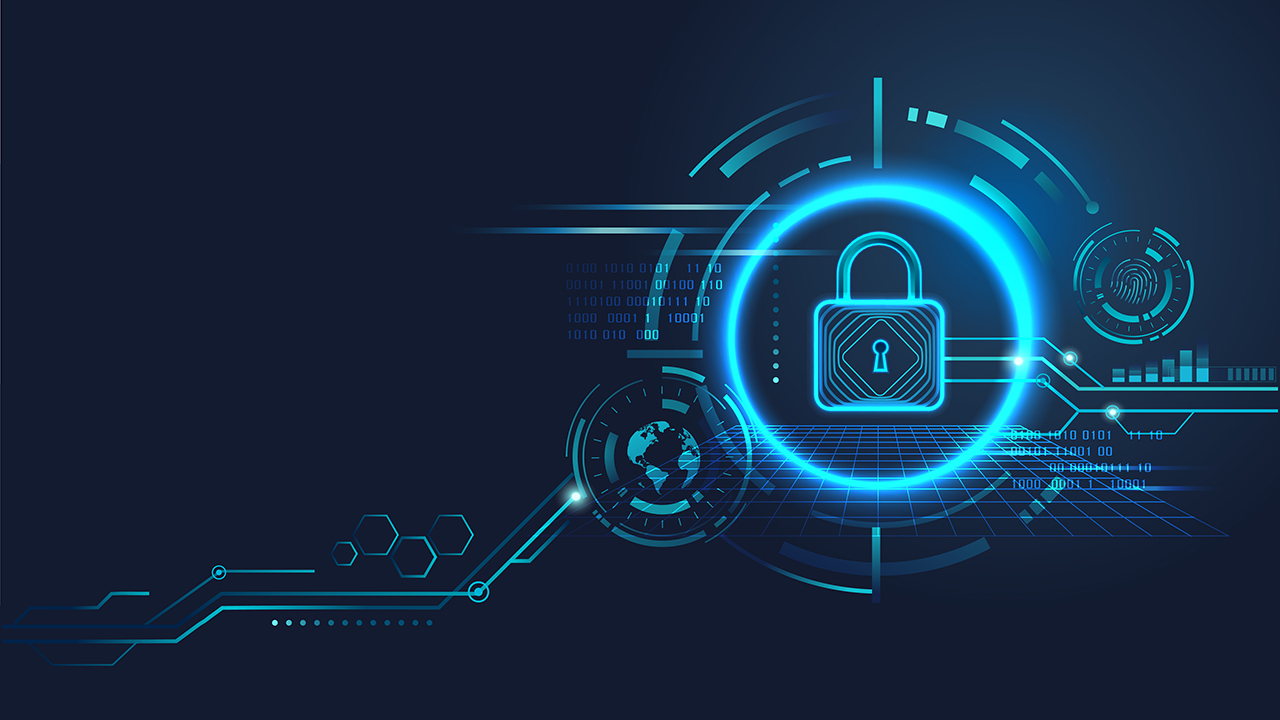Comment IoT fonctionne-t-elle dans la surveillance et la gestion des actifs ? Réponse rapide : IoT complètement la manière dont nous surveillons et entretenons les actifs physiques tels que les machines mobiles, grâce à des appareils intelligents, des outils de gestion à distance et une connectivité réseau rapide, fiable et sécurisée qui permet le traitement rapide des données nécessaire à l'automatisation et à l'analyse rapide des données.
Une gestion efficace des actifs est essentielle pour les entreprises modernes afin de maximiser leur productivité, minimiser les temps d'arrêt et optimiser l'allocation des ressources. Cependant, cela a toujours été une tâche difficile et chronophage impliquant de nombreux processus manuels. Aujourd'hui, IoT concrétiser une véritable gestion des actifs.
Dans cet article, nous fournirons des définitions de la gestion et de la surveillance des actifs. Nous aborderons les avantages de IoT la gestion des actifs et son fonctionnement. Nous discuterons également de certains défis IoT et des préoccupations en matière de sécurité, ainsi que de leurs solutions.
Aller à :
La gestion et le suivi des actifs impliquent la gestion et le suivi des actifs d'une organisation tout au long de leur durée de vie. Ces actifs peuvent être physiques - machines, équipements ou véhicules. Ils peuvent également être numériques - licences de logiciels et même noms de domaine.
La gestion des actifs consiste à acquérir, enregistrer, entretenir, suivre et céder des actifs. L'objectif est d'optimiser l'utilisation des actifs, de réduire les temps d'arrêt, de contrôler les coûts et de se conformer à la réglementation. Elle implique également des stratégies visant à augmenter la durée de vie et la valeur d'un actif pour l'entreprise.
La surveillance des actifs implique l'observation et l'analyse en temps réel des données relatives aux actifs. Les entreprises utilisent des technologies telles que des capteurs, des appareils connectés à l'Internet des objets (IoT) et des outils d'analyse avancés pour améliorer la surveillance. Ces technologies fournissent des données précieuses pour la prise de décision, la maintenance prédictive et l'optimisation des processus.
IoT Les appareils sont des objets physiques dotés de capteurs, de logiciels et d'une connectivité qui collectent et partagent des données en ligne. Ces appareils comprennent les appareils ménagers, les technologies portables, les machines industrielles et les infrastructures intelligentes. Les appareils IoT recueillent des données, les partagent avec d'autres appareils ou systèmes et agissent en conséquence, ce qui permet aux opérateurs de surveiller et de gérer les appareils à distance.
Le principe de fonctionnement des dispositifs IoT implique ces composants essentiels :
- Capteurs : les appareilsIoT intègrent généralement des capteurs, tels que la température, le mouvement, l'humidité, le GPS, etc. Ces capteurs surveillent l'environnement de l'appareil et collectent des données qui sont acheminées par des modules de communication sans fil et des passerelles vers une interface en nuage ou un centre de données à des fins d'analyse, de compréhension, de prise de décision et d'automatisation des processus.
- Connectivité : les appareilsIoT se connectent sans fil via des réseaux Wi-Fi, Bluetooth ou cellulaires. Ils peuvent ainsi envoyer les données collectées à d'autres appareils, à des plateformes en nuage ou à des serveurs centraux.
- Traitement des données et communication : L'appareil IoT traite et rassemble les données collectées par les capteurs et les appareils intelligents à la périphérie du réseau, et les envoie à un centre de données, à un autre appareil ou à un système basé dans le nuage pour le traitement, la visualisation des données et les tâches d'automatisation.
- Gestion à distance basée sur le cloud : Les systèmes sophistiqués de surveillance et de gestion à distance disponibles aujourd'hui - comme Digi Remote Manager® - collectent les données des appareils déployés et offrent une visibilité et un contrôle sur l'ensemble du réseau. La plateforme basée sur le cloud analyse et gère les données, envoie des alertes au personnel clé et permet une surveillance de la sécurité et même une gestion hors bande des appareils distants.
D'ici 2030, le marché du suivi et de la surveillance des actifs basé sur le site IoT vaudra 8,5 milliards de dollars. Le taux de croissance annuel composé (TCAC) de ce marché est de 8,74 % entre 2022 et 2030. Ces chiffres montrent la tendance croissante des industries à adopter les technologies IoT pour améliorer la gestion des actifs et la surveillance en temps réel.
.png?lang=en-US)
Source : Recherche sur la précédence
Le nombre de systèmes de suivi des actifs devrait atteindre 267 millions dans le monde d'ici à 2027. Cette augmentation montre que les entreprises des secteurs de la fabrication, de la logistique, du transport et de la gestion de la chaîne d'approvisionnement reconnaissent la valeur des solutions de suivi basées sur le site IoT.
En quoi la gestion et la surveillance des actifs basées sur le site IoT diffèrent-elles des systèmes conventionnels ?
IoT ont amélioré la méthode conventionnelle de gestion des actifs. Ils offrent beaucoup plus de fonctionnalités que les solutions conventionnelles. Ces solutions intelligentes de pointe combinent les processus et les flux de travail pour créer un système stratégique unifié.
Il offre une intelligence économique précieuse grâce aux alertes, à l'analyse des données en temps réel et au contrôle des actifs. D'autres fonctionnalités incluent la visibilité en temps réel, la maintenance prédictive et les flux de travail automatisés.

Source : Birlasoft
- Suivi des actifs à distance: la technologie en nuage de IoT permet aux employés d'accéder à distance aux actifs .
- Surveillance de l'état et de la santé des actifs: IoT aide à évaluer l'état des actifs en analysant les indicateurs de santé et les risques. Cela permet de prendre des mesures préventives et d'optimiser les actifs.
- Gestion du cycle de vie des actifs: IoT permet aux gestionnaires d'actifs de suivre les actifs de leur portefeuille tout au long de leur cycle de vie, maximisant ainsi la rentabilité.
- Automatisation du flux de travail: les solutions basées sur le site IoT automatisent les tâches répétitives et accélèrent le flux de travail. Cela permet de réduire les erreurs et d'augmenter la productivité des équipes.
- Maintenance prédictive des actifs: Il s'agit d'utiliser les données du site IoT pour prévoir le moment où les actifs tomberont en panne. Elle permet aux entreprises de prendre des mesures préventives pour réduire les arrêts et les temps d'immobilisation. Le système utilise souvent des données mises en cache à partir d'évaluations antérieures des performances des actifs pour optimiser les calendriers de maintenance prédictive.
Au-delà de sa supériorité par rapport aux systèmes conventionnels, IoT présente d'autres avantages pour la gestion des actifs, notamment
1. Surveillance des actifs en temps réel: IoT Les capteurs recueillent en permanence des informations sur l'utilisation, les performances et l'état des actifs. Grâce à ces informations, les gestionnaires d'actifs peuvent prendre des décisions proactives et intervenir rapidement.
2. Efficacité globale de l'équipement (OEE): Il s'agit d'un avantage majeur de IoT dans la gestion des actifs. L'OEE mesure l'efficacité des équipements et des actifs dans la fabrication et la production. Elle prend en compte trois facteurs : la disponibilité, la performance et la qualité.
Les données en temps réel sur les performances, l'état et l'utilisation des actifs, fournies par les appareils IoT , améliorent l'OEE.

Source : Birlasoft
3. Amélioration de la sécurité et de la sûreté: IoT aide les gestionnaires d'actifs à mettre en place des contrôles d'accès et une surveillance en temps réel. Les dispositifs IoT peuvent également surveiller les paramètres environnementaux et de sécurité afin de prévenir les risques.
4. Intégration aux systèmes de gestion des actifs: les technologies IoT s'intègrent parfaitement aux systèmes de gestion des actifs existants, tels que les systèmes de gestion de la maintenance assistée par ordinateur (CMMS) ou les logiciels de gestion des actifs de l'entreprise (EAM). Cette intégration simplifie la gestion des données et améliore la visibilité des actifs.
Le tableau suivant décrit les indicateurs clés de performance pour IoT la gestion des actifs.
| indicateur clé de performance |
Ce qu'il mesure |
IoT |
Comment cela est mesuré |
| Utilisation des actifs |
Pourcentage de temps pendant lequel l'actif est utilisé de manière productive |
Augmente en réduisant le temps d'inactivité |
Tableaux de bord d'utilisation, suivi du temps d'exécution |
| temps d'arrêt |
Les actifs horaires ne sont pas disponibles. |
Réductions grâce à la maintenance prédictive |
Alertes + journaux de maintenance |
| Coûts d'entretien |
Dépenses en réparations et main-d'œuvre |
Réduit grâce au passage à un service proactif |
Rapports CMMS/EAM |
| Perte/réduction |
Biens manquants ou volés |
Réduit grâce au suivi et au géorepérage |
Journaux de localisation, audits des divergences |
| Préparation à la conformité |
Rapidité et précision des audits |
Amélioré grâce à l'automatisation des enregistrements |
Rapports automatisés + historique des capteurs |

Source : Intuz
IoT-Les solutions de gestion et de surveillance des actifs utilisent des plateformes basées sur le cloud, l'analyse de données, les dispositifs IoT , les capteurs et la connectivité pour fournir des informations en temps réel sur les performances et l'état des actifs.
Voici comment cela se passe généralement :
- IoT des dispositifs et des capteurs: La solution consiste à installer des dispositifs et des capteurs IoT sur les biens pour surveiller la température, les vibrations, l'emplacement, l'utilisation et d'autres paramètres. Ces dispositifs peuvent être intégrés aux biens ou fixés directement sur ceux-ci.
- Collecte et transmission des données: les dispositifs IoT collectent en permanence les données des capteurs. Les technologies sans fil telles que Wi-Fi, Bluetooth, Zigbee et les réseaux cellulaires envoient ces données à une plateforme centrale en nuage.
- Plate-forme en nuage: Une plateforme en nuage stocke et traite les données relatives aux appareils. La plateforme en nuage sert de référentiel centralisé pour les informations relatives aux actifs. Par exemple, les développeurs qui utilisent Platform.sh peuvent facilement créer, tester et répéter leurs applications localement avant de les envoyer dans le nuage.
- Analyse et traitement des données: Des outils d'analyse et des algorithmes avancés traitent les données. Cette analyse permet d'identifier les modèles, les tendances, les anomalies et les problèmes liés à la performance et à l'état des actifs.
- Surveillance et alertes en temps réel: Les gestionnaires d'actifs et les opérateurs peuvent accéder à l'état des actifs, à leur localisation et aux mesures de performance depuis n'importe où grâce aux capacités de surveillance en temps réel de la plateforme en nuage. Des fonctionnalités telles que Chrome Headless peuvent automatiser les interactions basées sur le web avec les tableaux de bord de surveillance des actifs. Cela permet de rationaliser le processus de surveillance pour les gestionnaires d'actifs.
- Maintenance prédictive: La solution analyse les données historiques et les modèles pour prévoir la maintenance des actifs. La maintenance prédictive réduit les temps d'arrêt et les pannes imprévues et augmente la durée de vie des actifs.
- Visualisation des actifs et établissement de rapports: La solution IoT crée des tableaux de bord et des rapports simples à partir de ses données. Ces visualisations donnent aux gestionnaires d'actifs des informations exploitables. Des fonctionnalités telles que Drupal Headless permettent aux développeurs de créer des interfaces frontales de visualisation de données en temps réel pour les appareils IoT .
- Intégration avec les systèmes d'entreprise: La solution de gestion des actifs basée sur le site IoT peut prendre en charge l'intégration de systèmes existants tels que les progiciels de gestion intégrés (ERP) et les systèmes de gestion de la maintenance assistée par ordinateur (CMMS) afin de créer une vue d'ensemble des données relatives aux actifs.
- Contrôle à distance et automatisation: les solutions de gestion des actifs basées sur le site IoT peuvent permettre aux opérateurs d'ajuster les paramètres à distance, d'effectuer des diagnostics ou de déclencher des actions.
Le déploiement réussi IoT la gestion des actifs nécessite une planification minutieuse en matière de connectivité, de gestion des données et de sécurité.
Connectivité et sélection du réseau
Le choix de la connectivité appropriée dépend du type d'actif, de son emplacement et des exigences en matière de données. Les réseaux cellulaires sont idéaux pour les actifs mobiles ou distants, tandis que les technologies LPWAN prennent en charge les cas d'utilisation à longue portée et à faible consommation d'énergie. Le Wi-Fi et l'Ethernet peuvent convenir aux actifs fixes sur site. Une stratégie de connectivité flexible et évolutive garantit la viabilité à long terme à mesure que le portefeuille d'actifs s'agrandit.
Sélection des capteurs et stratégie en matière de données
Tous les actifs ne nécessitent pas le même niveau de surveillance. Les organisations doivent identifier les indicateurs (tels que l'emplacement, la température, les vibrations ou les heures d'utilisation) qui apportent le plus de valeur. La collecte de données exploitables plutôt que de données excessives permet de contrôler les coûts et de simplifier les analyses.
Intégration avec les systèmes d'entreprise
Les données IoT sont particulièrement précieuses lorsqu'elles sont intégrées aux plateformes existantes de gestion des actifs d'entreprise (EAM), de gestion de maintenance assistée par ordinateur (GMAO) et d'ERP. L'intégration permet l'automatisation des ordres de travail, la génération d'alertes en temps réel et la prise de décisions basées sur les données pour l'ensemble des équipes d'exploitation et de maintenance.
Sécurité et gestion des appareils
Les solutions de gestion IoT doivent inclure des mesures de sécurité robustes, telles que des communications cryptées, l'authentification des appareils et des mises à jour sécurisées du micrologiciel. La gestion centralisée des appareils permet aux organisations de surveiller l'état des appareils, d'appliquer des mises à jour à distance et de maintenir la conformité de milliers d'actifs connectés.

La gestion IoT trouve de nombreuses applications dans tous les secteurs, y compris dansles villeset les bâtimentsintelligents. Les cas d'utilisation suivants illustrent comment IoT etIoT surveiller les actifs. Grâce à la surveillance en temps réel, les organisations peuvent collecter et transmettre en continu des données sur les actifs, ce qui permet aux équipes de voir l'état, l'emplacement et la condition des actifs au fur et à mesure que les événements se produisent.
Gestion du parc automobile
Le suivi des actifs IoT permet de surveiller l'emplacement des véhicules, leur consommation de carburant et le comportement des conducteurs. Ces données permettent d'optimiser les itinéraires, de réduire les coûts de carburant, d'améliorer la sécurité des conducteurs et d'augmenter l'efficacité de la flotte. Les alertes en temps réel en cas de freinage brusque, d'excès de vitesse, de ralenti excessif ou d'utilisation non autorisée des véhicules aident les responsables à résoudre rapidement les problèmes et à renforcer les habitudes de conduite sécuritaires. Au fil du temps, ces informations permettent également de mieux planifier l'entretien des véhicules et d'ajuster la taille de la flotte en révélant les schémas d'utilisation sur les différents itinéraires et quarts de travail.
Gestion des entrepôts
IoT permettent de suivre les niveaux de stock, les mouvements de stock et l'optimisation du stockage dans les entrepôts. Cela permet d'éviter les ruptures de stock, de réduire les coûts d'inventaire et de rationaliser le traitement des commandes. La visibilité en temps réel sur l'emplacement des articles et la rapidité avec laquelle ils sont déplacés aide les équipes à réduire le temps de préparation des commandes, à minimiser les erreurs de placement et à améliorer la précision globale. Ces informations permettent également de prendre des décisions plus éclairées en matière de réapprovisionnement et d'agencement, ce qui facilite l'adaptation des opérations pendant les pics de demande.
Surveillance des équipements lourds
IoT installés sur les engins lourds permettent de suivre leur emplacement et leur utilisation en temps réel. Ces informations facilitent la gestion efficace des grands parcs de véhicules utilisés dans la construction ou l'exploitation minière. En combinant des données télémétriques telles que les heures de fonctionnement du moteur, les temps d'inactivité, la consommation de carburant et les conditions d'exploitation, les équipes peuvent planifier la maintenance de manière proactive et réduire les temps d'arrêt imprévus. Cela permet également d'améliorer l'utilisation des actifs en identifiant ceux qui sont sous-utilisés, surchargés ou qui doivent être redéployés afin de respecter le calendrier des projets.
Maintenance des aéronefs
IoT installés sur les composants des avions surveillent leur état et leurs performances. Ils permettent une maintenance prédictive et réduisent les temps d'immobilisation. En suivant en continu des paramètres tels que les vibrations, la température, la pression et l'usure, les équipes de maintenance peuvent détecter les premiers signes de défaillance et résoudre les problèmes pendant les fenêtres de maintenance prévues. Cela améliore la disponibilité de la flotte tout en aidant les compagnies aériennes à réduire leurs coûts de maintenance et à éviter les réparations de dernière minute qui perturbent leurs activités.
Fabrication et opérations industrielles
Les fabricants utilisent IoT pour surveiller l'état des équipements, suivre les taux d'utilisation et permettre une maintenance prédictive. En collectant en continu des données sur les vibrations, la température et la durée de fonctionnement, les entreprises peuvent identifier les premiers signes de défaillance et planifier la maintenance de manière proactive, ce qui réduit les temps d'arrêt imprévus et prolonge la durée de vie des actifs.
Services publics et infrastructures énergétiques
Les services publics s'appuient sur IoT gérer les actifs distribués tels que les sous-stations, les transformateurs, les compteurs et les équipements de terrain. La surveillance à distance permet une détection plus rapide des pannes, réduit le besoin d'inspections manuelles et soutient les stratégies de maintenance prédictive qui améliorent la fiabilité du service et réduisent les coûts opérationnels.
Gestion des soins de santé et des installations
Les hôpitaux et les grandes installations utilisent IoT suivre les actifs critiques tels que les appareils médicaux, les systèmes CVC et les équipements de sécurité. Les données de localisation en temps réel garantissent la disponibilité des actifs en cas de besoin, tandis que la surveillance de leur état permet de maintenir la conformité aux normes réglementaires et de sécurité.
Le suivi des principales mesures de performance est essentiel pour évaluer les solutions de gestion des actifs basées sur le site IoT. Surveillez les paramètres suivants :
- Temps d'arrêt et temps de fonctionnement des actifs: Suivez la durée pendant laquelle les actifs sont opérationnels (temps de fonctionnement) et non fonctionnels (temps d'arrêt). IoT-La gestion des actifs basée sur la technologie devrait permettre de réduire les temps d'arrêt et d'augmenter les temps de fonctionnement, améliorant ainsi l'utilisation des actifs et la productivité.
- Temps moyen entre les défaillances (MTBF) : Cet indicateur calcule le temps moyen entre les défaillances d'un actif. La maintenance prédictive et les réparations opportunes augmentent le MTBF, tandis qu'une diminution indique des problèmes de santé et de performance de l'actif.
- Efficacité globale des équipements (OEE): la gestion des actifs IoT devrait augmenter l'OEE afin de stimuler la productivité et réduire le gaspillage.
- Retour sur investissement (ROI): calculez l'impact financier de la gestion des actifs IoT. Comparez les coûts de la solution à ses avantages, tels que la réduction des coûts de maintenance, l'augmentation de la productivité et la durée de vie des actifs.

Il est essentiel d'aborder ces points pour maximiser le potentiel de IoT tout en protégeant les données, les actifs et la vie privée des utilisateurs.
Défis :
- Interopérabilité: L'intégration de divers dispositifs et plateformes IoT peut entraîner des problèmes de communication et de partage des données.
- Évolutivité: La mise à l'échelle des déploiements de IoT pour gérer de grandes quantités de données et d'appareils est difficile et nécessite beaucoup de ressources.
- Confidentialité des données: La collecte de quantités massives de données suscite des inquiétudes quant à la protection de la vie privée, à la propriété et aux réglementations en matière de protection des données.
- Gestion de l'alimentation: les appareils IoT dont les sources d'alimentation sont limitées ont besoin d'une gestion efficace de l'alimentation pour fonctionner en continu.
Considérations relatives à la sécurité :
- Sécurité des données: La protection des données générées par IoT contre les accès non autorisés et les cyberattaques est essentielle à l'intégrité et à la confidentialité des données.
- Sécurité des appareils: L'authentification forte et le cryptage des appareils IoT empêchent l'accès et le contrôle non autorisés.
- Mises à jour des microprogrammes: Mise à jour régulière du micrologiciel de l'appareil IoT afin de corriger les failles de sécurité et d'éviter les exploits.
- Sécurité des réseaux: La sécurisation des canaux de communication et des réseaux IoT empêche le vol de données et l'accès non autorisé aux appareils connectés.
- Sécurité de la chaîne d'approvisionnement: La protection des appareils et des composants IoT tout au long de la chaîne d'approvisionnement permet d'éviter les manipulations et les insertions malveillantes.
Aujourd'hui, des fournisseurs de confiance comme Digi intègrent des fonctions de sécurité sophistiquées dans les solutions IoT et fournissent les outils de surveillance et de gestion indispensables pour détecter et contrecarrer les cyber-risques et maintenir les appareils déployés sécurisés et à jour.
Digi propose une liste complète de solutions et de services IoT pour répondre à vos besoins en matière de gestion des actifs IoT :
- L'écosystème Digi ConnectCore: Une suite de solutions de développement embarquées pour les équipementiers afin de créer des produits connectés et de haute performance pour l'industrie, la fabrication, le médical, la vente au détail et les cas d'utilisation de la chaîne d'approvisionnement, avec des services intégrés de surveillance de la sécurité et de gestion à distance.
- L'écosystème Digi XBee: Une famille complète de modules de communication sans fil pour les équipementiers afin de prendre en charge l'intégration RF et cellulaire dans les applications IoT , ainsi que la connectivité des capteurs et l'informatique périphérique - avec une suite complète d'outils pour le développement, les tests et le déploiement.
- Routeurs cellulaires Digi: Une gamme complète de solutions cellulaires pour les entreprises, l'industrie et les transports, avec le système d'exploitation Digi Accelerated Linux (DAL OS) intégré, Digi Remote Manager une plateforme de surveillance et de gestion à distance, et le cadre de sécurité Digi TrustFence®, ainsi qu'une série de services à valeur ajoutée pour optimiser les déploiements.
- Solutions de gestion de l'infrastructure Digi: Une offre étendue de solutions pour la connectivité des capteurs, la surveillance et le contrôle industriels, et la gestion hors bande.
- Digi Wireless Design Services: Une équipe talentueuse d'ingénieurs créatifs qui peuvent prendre en charge la conception et le développement de produits, du concept à la fabrication, et au-delà - y compris les services de surveillance, de gestion et de sécurité en cours pour vos appareils déployés.
- Services professionnels Digi: Une équipe de professionnels de l'ingénierie qui peut soutenir la planification et le déploiement de votre projet IoT - y compris les études de site, le développement d'applications, les services de connectivité cellulaire, le déploiement, la formation de l'équipe et le soutien continu.
Vous trouverez ci-dessous des réponses rapides aux questions courantes sur la gestion des actifs IoT, notamment les cas d'utilisation, les avantages, les défis et les meilleures pratiques de mise en œuvre.
Qu'est-ce que la gestion des actifs et comment IoT la IoT ?
La gestion des actifs consiste à suivre, entretenir et optimiser les actifs tout au long de leur cycle de vie. IoT ce processus en offrant une visibilité en temps réel et une automatisation.
La gestion du cycle de vie des actifs comprend l'acquisition, le déploiement, l'utilisation, la maintenance et la mise hors service. IoT des capteurs connectés et des logiciels qui collectent en continu des données sur l'état, l'emplacement et l'utilisation des actifs, aidant ainsi les équipes à réduire les temps d'arrêt, à améliorer l'utilisation et à prendre des décisions plus rapides sur la base d'informations en temps réel.
Quel rôle jouent IoT dans la surveillance et le contrôle des actifs ?
IoT surveillent les actifs en collectant des données via des capteurs, en les transmettant de manière sécurisée via des réseaux et en les rendant utilisables grâce à un traitement en périphérie ou dans le cloud.
Les principaux éléments sont les suivants
- Capteurs et balises : GPS, température, vibrations, humidité, BLE/RTLS
- Connectivité : cellulaire (LTE/5G), Wi-Fi, LPWAN, Ethernet
- Passerelles périphériques : filtrage et mise en mémoire tampon locaux, protocoles tels que MQTT
- Plateformes cloud : tableaux de bord, alertes, analyses et automatisation
Ensemble, ces systèmes permettent une surveillance en temps réel, la détection des anomalies et l'automatisation des flux de travail, tels que les alertes de maintenance ou les ordres de travail.
Quels sont les principaux avantages de l'application IoT la gestion des actifs ?
IoT les performances des actifs, réduit les risques opérationnels et diminue les coûts de maintenance grâce à une surveillance continue et à des informations prédictives.
Les avantages courants comprennent :
- Surveillance des actifs en temps réel : visibilité sur leur état, leur emplacement et leur statut
- Utilisation améliorée : identifier les actifs inutilisés et optimiser les modèles d'utilisation
- Maintenance prédictive : détectez les problèmes à un stade précoce et réduisez les temps d'arrêt imprévus
- Prévention des pertes : le suivi et le géorepérage réduisent les pertes et les vols
- Meilleure intégration : IoT peuvent être connectées aux systèmes EAM et CMMS afin d'automatiser les workflows de reporting et de maintenance.
Quels sont les défis auxquels les organisations doivent faire face lorsqu'elles déploient une gestion des actifs IoT?
Les principaux défis liés au déploiement d'une gestion des actifs IoT sont la connectivité, la qualité des données, la sécurité et l'intégration, en particulier lorsqu'il s'agit de gérer un grand nombre d'actifs distribués.
Les organisations doivent prévoir :
- Limitations de connectivité dans les environnements éloignés ou industriels
- Stratégie en matière de données : collecter les bonnes données (sans excès) et les transformer en informations exploitables
- Intégration des actifs existants pour les équipements non conçus pour être connectés
- Sécurité et gestion du cycle de vie : chiffrement, authentification et mises à jour OTA
- Exploitation du parc d'appareils : approvisionnement, surveillance de l'état des appareils et application de correctifs à grande échelle
Le respect des normes et des meilleures pratiques telles que IoT NIST IoT et la norme CEI 62443 peut contribuer à réduire les risques. De plus, travailler avec un fournisseur de solutions tel que Digi, qui propose des solutions de bout en bout avec sécurité intégrée, surveillance et gestion à distance, ainsi que des services professionnels disponibles pour vous aider dans votre planification et votre déploiement, peut contribuer à garantir le succès de votre déploiement.
Comment une organisation doit-elle commencer à mettre en œuvre IoT la gestion des actifs ?
Commencez par un cas d'utilisation à forte valeur ajoutée, mesurez les performances de base, puis développez-vous dès que vous pouvez prouver le retour sur investissement.
Voici les étapes pratiques à suivre pour mettre en œuvre IoT la gestion des actifs :
- Sélectionnez les actifs prioritaires présentant un temps d'indisponibilité élevé, un risque de non-conformité ou un risque de perte/diminution.
- Définir les indicateurs de réussite (heures d'indisponibilité, taux d'utilisation, coût de maintenance)
- Déployer des capteurs + connectivité pour les paramètres clés (emplacement, température, vibrations)
- Configurer des tableaux de bord et des alertes pour les équipes opérationnelles
- Intégration avec EAM/CMMS pour automatiser les bons de travail et les registres d'actifs
- Évoluez et affinez en fonction des résultats, en élargissant à davantage d'actifs et de flux de travail.
Comment mesurez-vous le retour sur investissement de la gestion IoT ?
Le retour sur investissement est généralement mesuré à travers la réduction des temps d'arrêt, l'amélioration de l'utilisation, la diminution des coûts de maintenance et la réduction des pertes d'actifs.
Suivez les indicateurs de référence et post-déploiement tels que :
- Heures d'indisponibilité imprévues
- Coût de maintenance par actif
- Temps de recherche d'actifs
- Taux de rétrécissement/perte
- Temps moyen entre pannes (MTBF)
IoT a transformé la gestion des actifs, aidant les entreprises à améliorer leur efficacité, à réduire les temps d'arrêt et à prendre des décisions fondées sur des données. IoT-Les solutions basées sur les données rationalisent les flux de travail grâce au suivi en temps réel, à la maintenance prédictive et à l'automatisation.
Les applications de gestion des actifs se développeront parallèlement à la croissance du marché IoT , stimulant la productivité et les économies de coûts dans toutes les industries. Toutefois, les questions d'interopérabilité et de sécurité nécessitent une planification minutieuse et des mesures de mise en œuvre solides.
Il est essentiel de rester à l'affût des tendances émergentes qui pourraient avoir un impact sur votre stratégie. Par exemple, les développements dans le domaine de l'apprentissage automatique pourraient permettre aux systèmes IoT alimentés par l'IA d'améliorer encore leurs capacités.
Les gestionnaires seront plus facilement en mesure d'extraire des informations en temps réel à appliquer dans divers secteurs, de la médecine à la gestion des domaines d'IA et à l'investissement.(En savoir plus sur les domaines .ai)
Exploiter le potentiel de IoT tout en relevant ces défis aidera les entreprises à rester compétitives et à se développer durablement dans l'ère numérique dynamique et interconnectée.
Prochaines étapes
A propos de l'auteur
 Gregory Batchelor est vice-président du marketing de croissance chez Platform.shIl est l'un des fondateurs de l'entreprise, une plateforme unifiée de niveau professionnel pour la création, l'exploitation et l'extension de sites web et d'applications. Avec plus de 20 ans d'expérience dans le secteur technologique, notamment dans des entreprises telles qu'Oracle, Cisco et NTT, il s'est forgé une réputation de leader en matière de marketing et d'opérations commerciales. Pendant son temps libre, Gregory aime passer du temps avec sa famille, voyager et jouer au golf.
Gregory Batchelor est vice-président du marketing de croissance chez Platform.shIl est l'un des fondateurs de l'entreprise, une plateforme unifiée de niveau professionnel pour la création, l'exploitation et l'extension de sites web et d'applications. Avec plus de 20 ans d'expérience dans le secteur technologique, notamment dans des entreprises telles qu'Oracle, Cisco et NTT, il s'est forgé une réputation de leader en matière de marketing et d'opérations commerciales. Pendant son temps libre, Gregory aime passer du temps avec sa famille, voyager et jouer au golf.
Note de la rédaction : cet article a été publié initialement en décembre 2023 et mis à jour en janvier 2026.